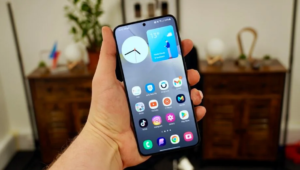FaceTime Android: Apple Expands Its Video Call Service Beyond iOS

In a significant move, Apple has expanded FaceTime, its popular video calling service, to Android users. This development marks a major shift in Apple’s traditionally closed ecosystem, where FaceTime Android had been exclusive to Apple devices such as iPhones, iPads, and Macs. Now, with FaceTime becoming available to Android users, Apple aims to bridge the gap between Apple and non-Apple devices, enhancing communication across platforms.
FaceTime for Android: How It Works
Unlike Apple devices, where FaceTime is built-in, Android users do not have a standalone FaceTime app. Instead, they can join FaceTime calls through a web link, which is created and shared by the host using an Apple device. Here’s how it works:
- Link Sharing: An Apple user creates a FaceTime call and generates a unique link that can be shared via text message, email, or any other communication app. This link can be accessed by anyone on Android or Windows through a browser.
- Browser-Based Interface: Android users can click on the link and join the call via their mobile browser. The interface is simple and mirrors the core features of FaceTime, such as high-quality video and audio, without needing to download an app.
- Cross-Platform Compatibility: The web-based version allows Android and Windows users to participate in FaceTime calls with the same level of encryption and privacy that Apple offers on its native devices.
This new feature ensures that FaceTime calls remain private, as all communications are end-to-end encrypted, regardless of the platform.
Why This is a Big Deal
Apple’s move to open up FaceTime to Android signals a shift in its strategy to compete with other popular video call services like Zoom, Google Meet, and WhatsApp. While FaceTime remains a highly favored video chat tool among Apple users, the limitation of its availability to iOS and macOS devices restricted its reach. Now, with the ability to invite non-Apple users, FaceTime becomes a more versatile tool for connecting with family, friends, and colleagues, regardless of their device preferences.
This change also aligns with the increasing demand for seamless communication across platforms, especially in a world where remote work and virtual meetings have become the norm.
Limitations and Future Potential
Though this step makes FaceTime more accessible, it’s not a fully-fledged app for Android users. Unlike Apple devices where users can initiate and schedule FaceTime calls, Android users are limited to joining calls via a browser. Additionally, features like FaceTime screen sharing and FaceTime effects, such as Memoji, remain exclusive to Apple devices.
It remains to be seen whether Apple will eventually release a full-featured FaceTime app for Android or if the company will maintain its current browser-based approach. However, this development is a clear indication that Apple is increasingly recognizing the importance of cross-platform compatibility.
How to Join a FaceTime Call on Android
Joining a FaceTime call on Android is simple:
- Receive a Link: An Apple user will share a FaceTime link with you via text or email.
- Open the Link: Click the link on your Android device, which will open in your browser.
- Enter Your Name: You’ll be prompted to enter your name to join the call.
- Join the Call: Once you’re in, you’ll be connected to the FaceTime call, enjoying the same smooth experience that Apple users have long appreciated.
FaceTime For Android Worth it?
The introduction of FaceTime compatibility for Android users is a welcome change that breaks down the barriers between Apple and non-Apple users. While Android users are currently limited to joining calls via a browser, this move signals a broader effort by Apple to compete in the cross-platform communication space. As the lines between ecosystems blur, users from different platforms can now connect more easily than ever before, making FaceTime a more inclusive video calling option.

Kazam is Focused on creating and reporting timely content in technology with a special focus on mobile phone technology. Kazam reports, analyzes, and reviews recent trends, news and rumors in mobile phone technology and provides the best possible insights to enhance your experience and knowledge.








